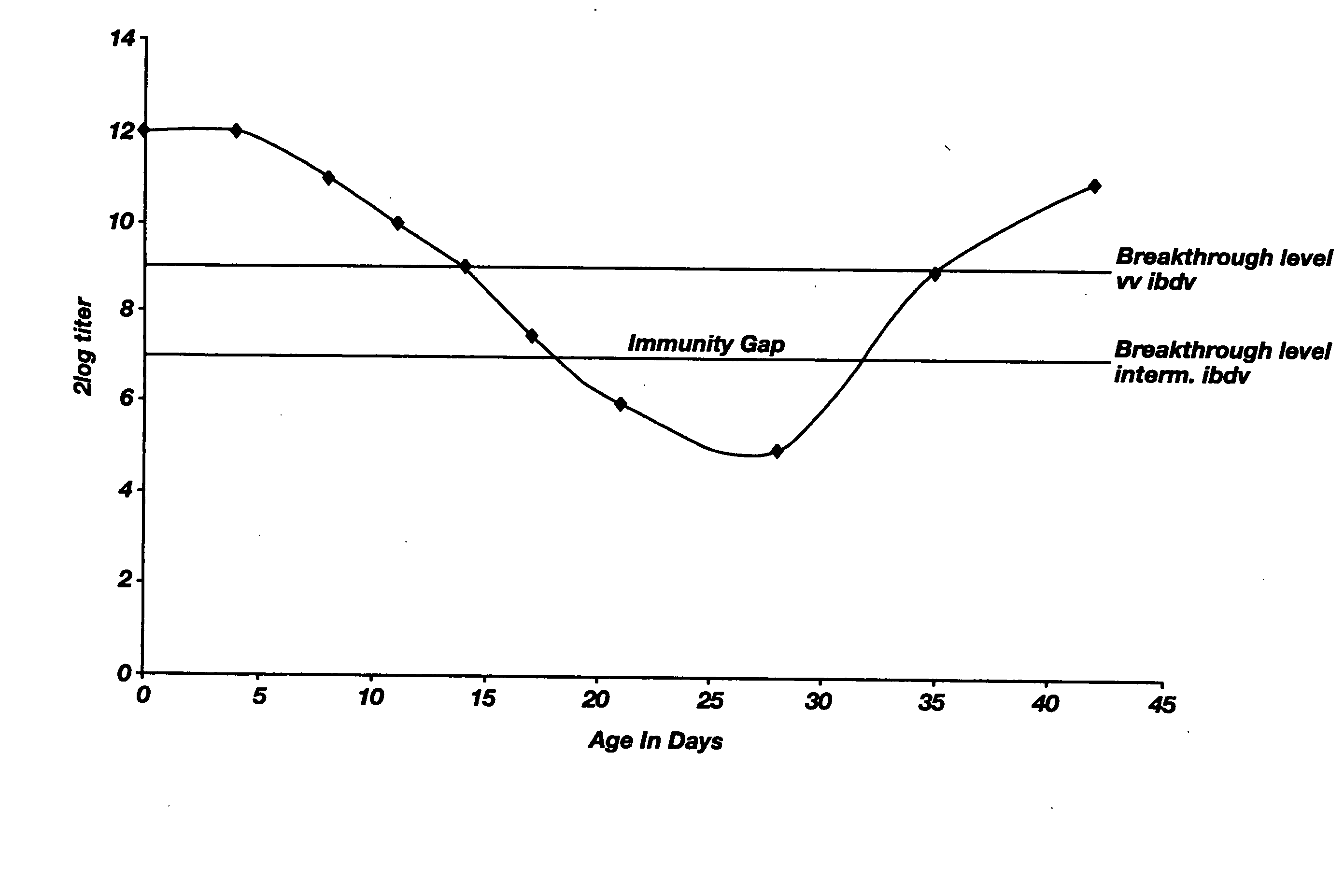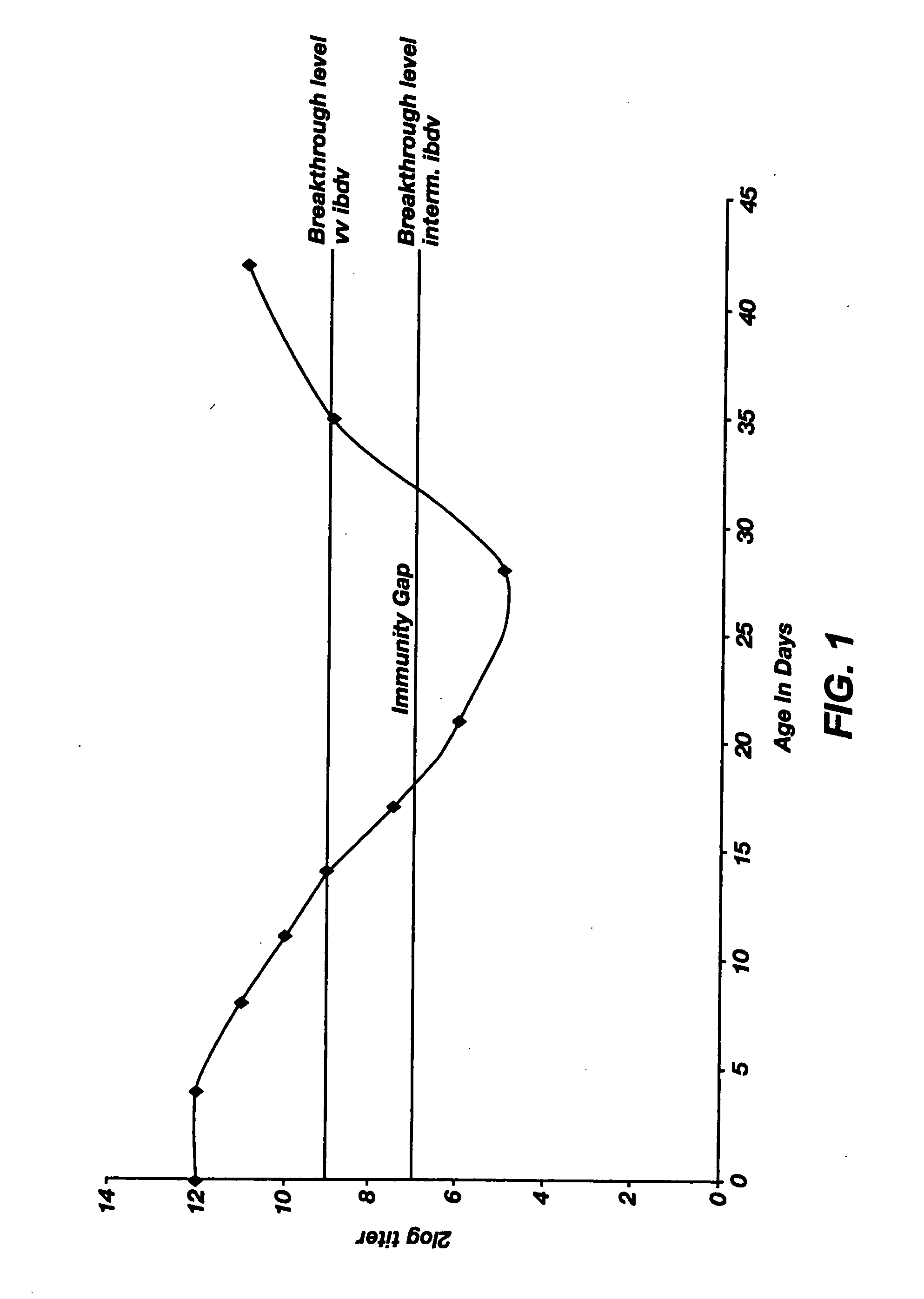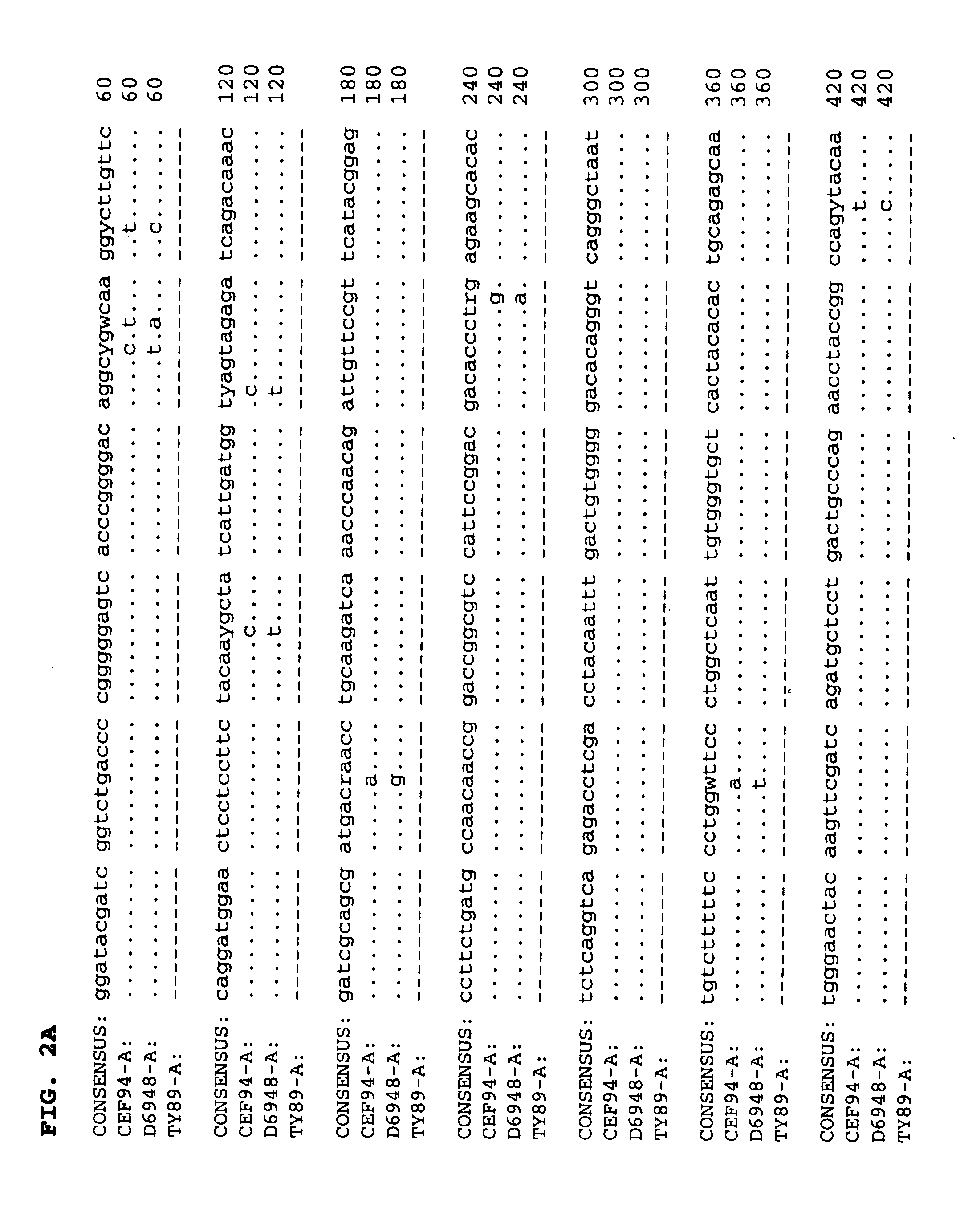Mosaic infectious bursal disease virus vaccines
a vaccine and infectious bursal virus technology, applied in the field of biotechnology, can solve the problems of inability or only little of the isolate to infect, multiply or be released, and achieve the effects of reducing cytotoxic and apoptotic effects, positive effect on replication, and profound effect on ibdv viability
- Summary
- Abstract
- Description
- Claims
- Application Information
AI Technical Summary
Benefits of technology
Problems solved by technology
Method used
Image
Examples
example 1
REFERENCES BELONGING TO EXAMPLE 1
[0264] Azad, A. A., Fahey, K. J., Barrett, S. A., Emy, K. M., and Hudson, P. J. (1986). Expression in Escherichia coli of cDNA fragments encoding the gene for the host-protective antigen of infectious bursal disease virus. Virology 149(2), 190-198. [0265] Been, M. D., Perrotta, A. T., and Rosenstein, S. P. (1992). Secondary structure of the self-cleaving RNA of hepatitis delta virus: applications to catalytic RNA design. Biochemistry 31(47), 11843-52. [0266] Boot, H. J., ter Huurne, A. A., Peeters, B. P., and Gielkens, A. L. (1999). Efficient rescue of infectious bursal disease virus from cloned cDNA: evidence for involvement of the 3′-terminal sequence in genome replication. Virology 265(2), 330-41. [0267] Bottcher, B., Kiselev, N. A., Stel'Mashchuk, V. Y., Perevozchikova, N. A., Borisov, A. V., and Crowther, R. A. (1997). Three-dimensional structure of infectious bursal disease virus determined by electron cryomicroscopy. J. Virol. 71(1), 325-30. [...
example 2
REFERENCES BELONGING TO EXAMPLE 2
[0297] Antin, P. B., and Ordahl, C. P. (1991). Isolation and characterization of an avian myogenic cell line. Dev Biol 143(1), 111-21. [0298] Bayyari, G. R., Story, J. D., Beasley, J. N., and Skeeles, J. K. (1996). Pathogenicity studies of an Arkansas variant infectious bursal disease virus. Avian Dis 40(3), 516-32. [0299] Boot, H. J., ter Huurne, A. A., Peeters, B. P., and Gielkens, A. L. (1999). Efficient rescue of infectious bursal disease virus from cloned cDNA: evidence for involvement of the 3′-terminal sequence in genome replication. Virology 265(2), 330-41. [0300] Britton, P., Green, P., Kottier, S., Mawditt, K. L., Penzes, Z., Cavanagh, D., and Skinner, M. A. (1996). Expression of bacteriophage T7 RNA polymerase in avian and mammalian cells by a recombinant fowlpox virus. Journal of General Virology 77(Pt 5), 963-7. [0301] Brown, M. D., and Skinner, M. A. (1996). Coding sequences of both genome segments of a European “very virulent” infectio...
example 3
REFERENCES BELONGING TO EXAMPLE 3
[0323] Antin, P. B., and C. P. Ordahl. 1991. Isolation and characterization of an avian myogenic cell line. Dev Biol. 143:111-21. [0324] Bayyari, G. R., J. D. Story, J. N. Beasley, and J. K. Skeeles. 1996. Pathogenicity studies of an Arkansas variant infectious bursal disease virus. Avian Dis. 40:516-32. [0325] Boot, H. J., A. A. ter Huurne, B. P. Peeters, and A. L. Gielkens. 1999. Efficient rescue of infectious bursal disease virus from cloned cDNA: evidence for involvement of the 3′-terminal sequence in genome replication. Virology. 265:330-41. [0326] Bottcher, B., N. A. Kiselev, V. Y. Stel'Mashchuk, N. A. Perevozchikova, A. V. Borisov, and R. A. Crowther. 1997. Three-dimensional structure of infectious bursal disease virus determined by electron cryomicroscopy. J Virol. 71:325-30. [0327] Britton, P., P. Green, S. Kottier, K. L. Mawditt, Z. Penzes, D. Cavanagh, and M. A. Skinner. 1996. Expression of bacteriophage T7 RNA polymerase in avian and mamm...
PUM
| Property | Measurement | Unit |
|---|---|---|
| volume | aaaaa | aaaaa |
| temperature | aaaaa | aaaaa |
| total volume | aaaaa | aaaaa |
Abstract
Description
Claims
Application Information
 Login to View More
Login to View More - R&D
- Intellectual Property
- Life Sciences
- Materials
- Tech Scout
- Unparalleled Data Quality
- Higher Quality Content
- 60% Fewer Hallucinations
Browse by: Latest US Patents, China's latest patents, Technical Efficacy Thesaurus, Application Domain, Technology Topic, Popular Technical Reports.
© 2025 PatSnap. All rights reserved.Legal|Privacy policy|Modern Slavery Act Transparency Statement|Sitemap|About US| Contact US: help@patsnap.com



